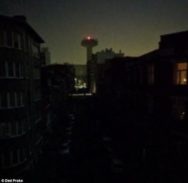
Brussels Grid Collapses – Solar Batteries No Help
Large parts of Brussels are without power tonight after the City Grid ceased to function at about 10.45pm local time.
But buildings with solar panels on rooftops were not able to maintain their own power supply because the panels are all feeding into to the grid. Even solar panels with battery backup were unable to maintain a supply because EU regulations require a cutoff of the battery supply in the event of a grid outage.
Brussels is home to the HQ of the European Commission – the Berlaymont Building – which has its own petrol powered generators in the basement, so it is still functioning on skeleton power at time of writing.
The health and safety rules were introduced 10 years ago, even though a simple cutoff switch between the grid and the panels or batteries in individual buildings, would solve the problem by removing the threat to power workers as they tried to restore the supply. Lobbyists from the large power companies and grid management companies are responsible for the restrictive regulations.
It is believed the northern part of the EU capital has been affected the worst with the cause still to be identified.Residents have been forced to use candles and have posted pictures of their efforts to restore light on social media.
An earlier power cut is understood to have hit a smaller part of the city earlier in the evening but was ‘resolved by 8.30pm’.
Power firm Sibelga, which handles gas and electricity services in the city, and power network operator Elia have confirmed there is a fault in the grid, with repair teams on site.
Sirens have been heard across the city, which was the victim of a terrorist attack last March.…

